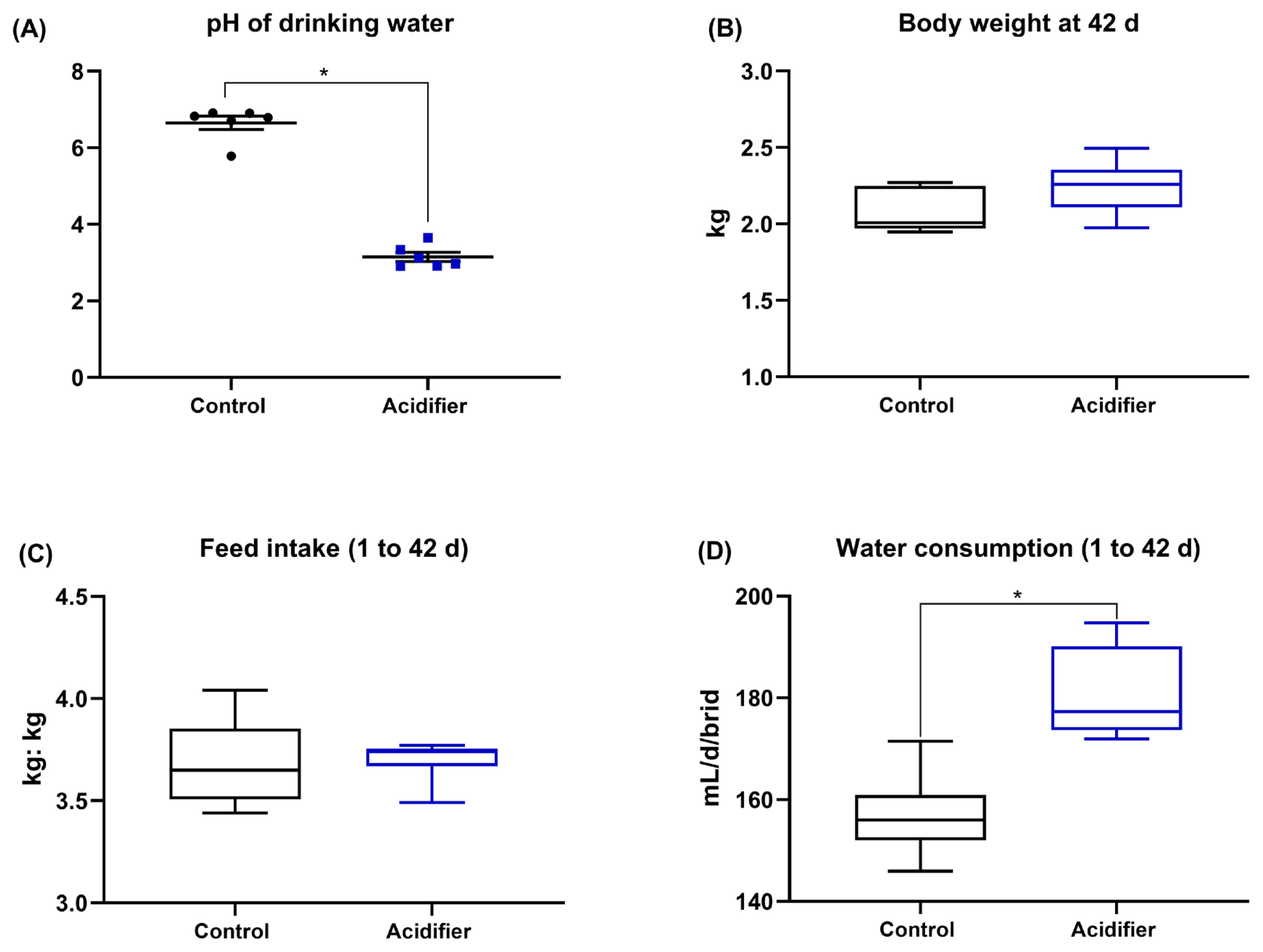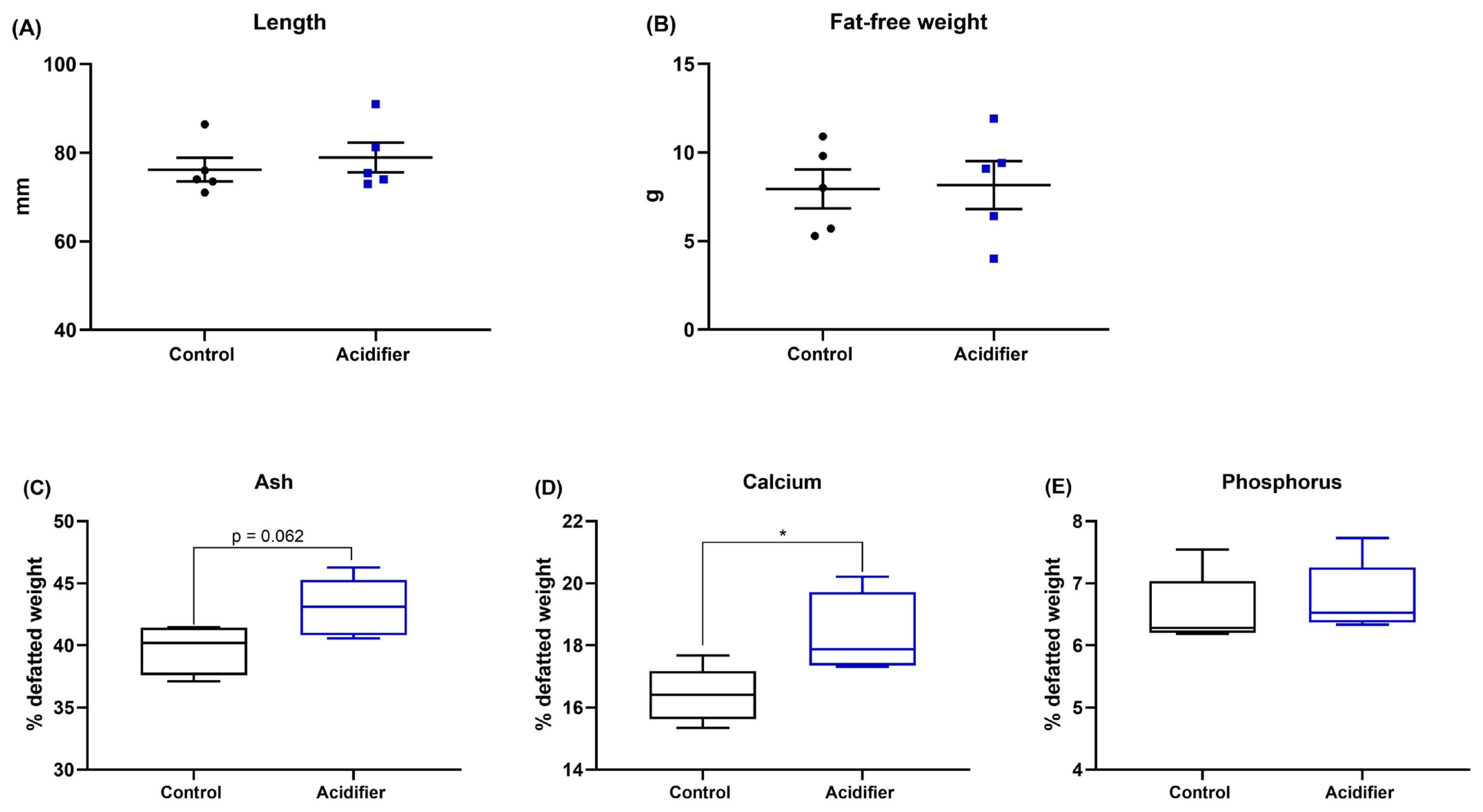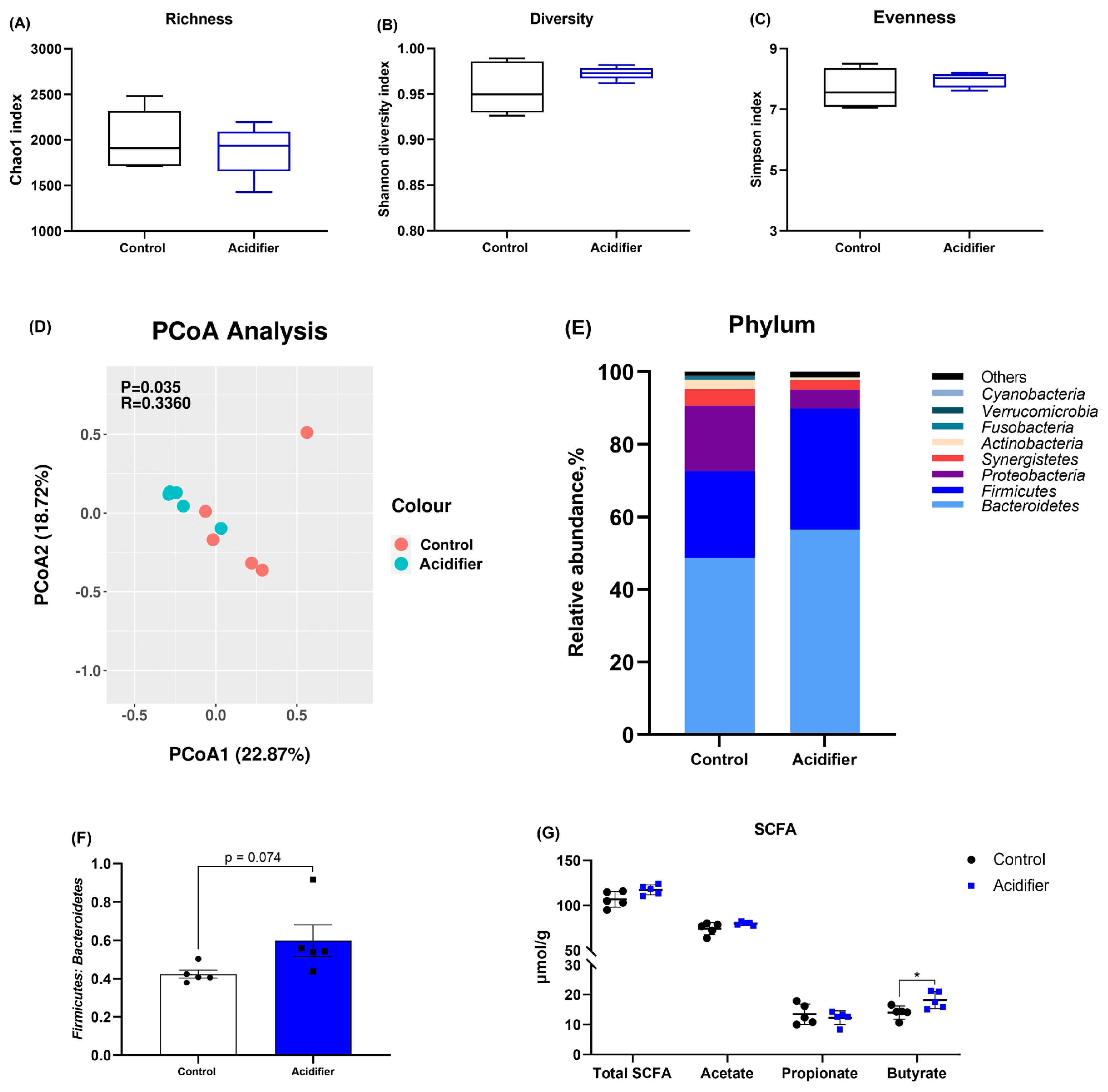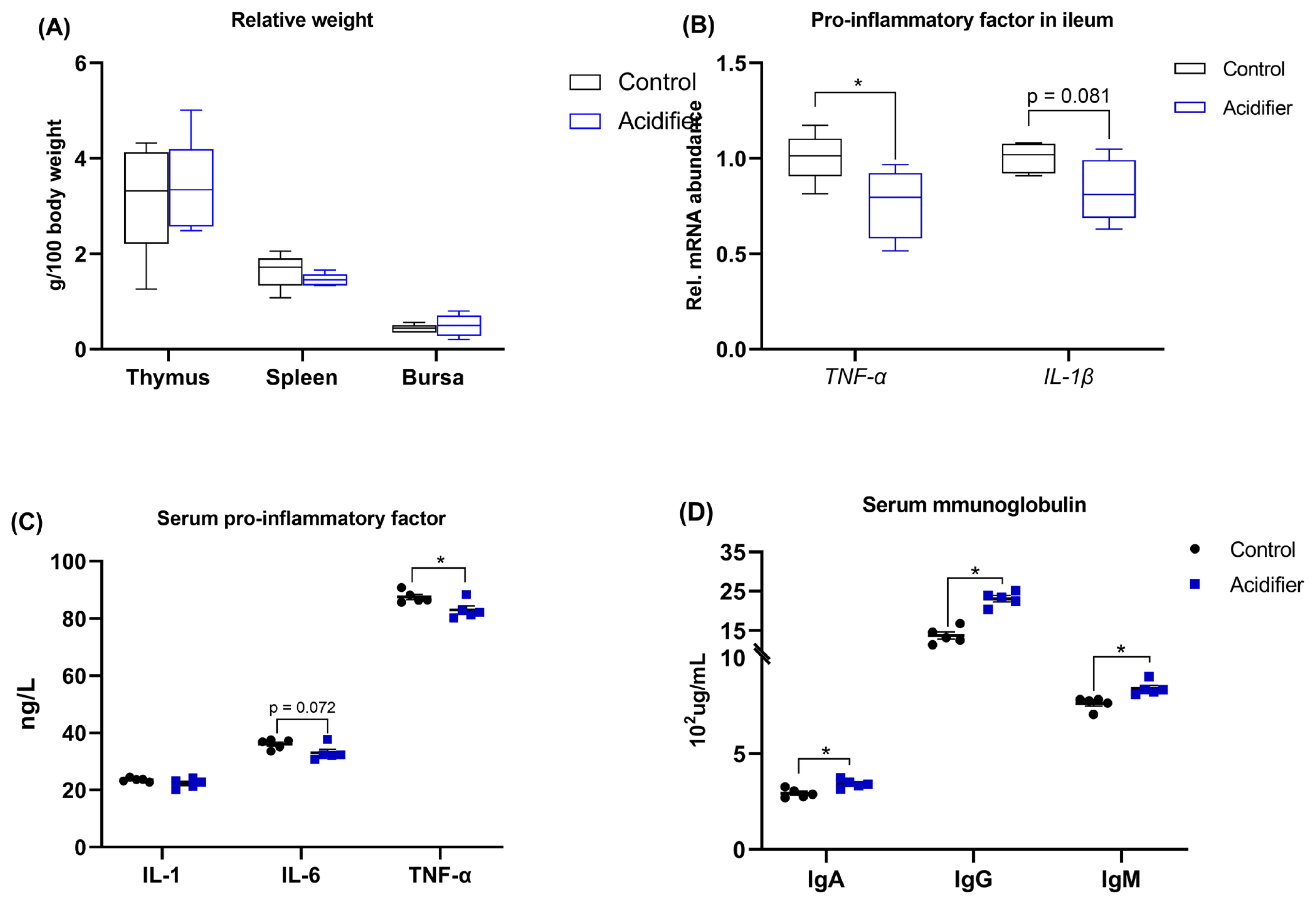2. Boling-Frankenbach SD, Snow JL, Parsons CM, Baker DH. The effect of citric acid on the calcium and phosphorus requirements of chicks fed corn-soybean meal diets. Poult Sci 2001; 80:783–8.
https://doi.org/10.1093/ps/80.6.783


3. Zhang H, Zeng Q, Bai S, et al. Effect of graded calcium supplementation in low-nutrient density feed on tibia composition and bone turnover in meat ducks. Br J Nutr 2018; 120:1217–29.
https://doi.org/10.1017/s0007114518002556


5. Luckstadt C. Acidifiers in animal nutrition. Nottingham, UK: Nottingham University Press; 2007.
6. Nourmohammadi R, Hosseini SM, Farhangfar H, Bashtani M. Effect of citric acid and microbial phytase enzyme on ileal digestibility of some nutrients in broiler chicks fed corn-soybean meal diets. Ital J Anim Sci 2012; 11:e7
https://doi.org/10.4081/ijas.2012.e7

7. Abdel-Fattah SA, El-Sanhoury MH, El-Mednay NM, Abdel-Azeem F. Thyroid activity, some blood constituents, organs morphology and performance of broiler chicks fed supplemental organic acids. Int J Poult Sci 2008; 7:215–22.
https://doi.org/10.3923/ijps.2021.224.230

8. Chowdhury R, Islam KM, Khan MJ, et al. Effect of citric acid, avilamycin, and their combination on the performance, tibia ash, and immune status of broilers. Poult Sci 2009; 88:1616–22.
https://doi.org/10.3382/ps.2009-00119


9. Ebrahimnezhad Y, Maheri-sis N, Aghdam SH, et al. The effects of combination of citric acid and microbial phytase on the egg quality characteristics in laying hens. Asian J Anim Vet Adv 2008; 3:293–7.
https://doi.org/10.3923/ajava.2008.293.297

10. Ziaie H, Bashtani M, Torshizi MK, Naeeimipour H, Farhangfar H, Zeinali A. Effect of antibiotic and its alternatives on morphometric characteristics, mineral content and bone strength of tibia in Ross broiler chickens. Glob Vet 2011; 7:315–22.
11. Świątkiewicz S, Koreleski J, Arczewska A. Effect of organic acids and prebiotics on bone quality in laying hens fed diets with two levels of calcium and phosphorus. Acta Vet Brno 2010; 79:185–93.
https://doi.org/10.2754/avb201079020185

12. Liem A, Pesti GM, Edwards HM. The effect of several organic acids on phytate phosphorus hydrolysis in broiler chicks. Poult Sci 2008; 87:689–93.
https://doi.org/10.3382/ps.2007-00256


16. Schwarzer M, Makki K, Storelli G, et al. Lactobacillus plantarum strain maintains growth of infant mice during chronic undernutrition. Science 2016; 351:854–7.
https://doi.org/10.1126/science.aad8588


17. Ohlsson C, Nigro G, Boneca IG, Backhed F, Sansonetti P, Sjogren K. Regulation of bone mass by the gut microbiota is dependent on NOD1 and NOD2 signaling. Cell Immunol 2017; 317:55–8.
https://doi.org/10.1016/j.cellimm.2017.05.003


20. Yesilbag D, Colpan I. Effects of organic acid supplemented diets on growth performance, egg production and quality and on serum parameters in laying hens. Rev Méd Vét 2006; 157:280–4.
23. Li M, Long S, Wang Q, et al. Mixed organic acids improve nutrients digestibility, volatile fatty acids composition and intestinal microbiota in growing-finishing pigs fed high-fiber diet. Asian-Australas J Anim Sci 2019; 32:856–64.
https://doi.org/10.5713/ajas.18.0517


24. Schepper JD, Collins FL, Rios-Arce ND, et al. Probiotic Lactobacillus reuteri prevents postantibiotic bone loss by reducing intestinal dysbiosis and preventing barrier disruption. J Bone Miner Res 2019; 34:681–98.
https://doi.org/10.1002/jbmr.3635


25. National Research Council. Nutrient requirements of poultry. 9th rev. edWashington, DC, USA: National Academies Press; 1994.
26. Zhang HY, Liao H, Zeng QF, et al. A study on the sternum growth and mineralization kinetic of meat duck from 35 to 63 days of age. Poult Sci 2017; 96:4103–15.
https://doi.org/10.3382/ps/pex223


28. Qin SM, Zhang KY, Ding XM, Bai SP, Wang JP, Zeng QF. Effect of dietary graded resistant potato starch levels on growth performance, plasma cytokines concentration, and intestinal health in meat ducks. Poult Sci 2019; 98:3523–32.
https://doi.org/10.3382/ps/pez186


29. Hamid H, Shi HQ, Ma GY, et al. Influence of acidified drinking water on growth performance and gastrointestinal function of broilers. Poult Sci 2018; 97:3601–9.
https://doi.org/10.3382/ps/pey212


30. Abbas G, Khan SH, Rehman HU. Effects of formic acid administration in the drinking water on production performance, egg quality and immune system in layers during hot season. Avian Biol Res 2013; 6:227–32.
https://doi.org/10.3184/175815513X13740707043279

31. Dibner JJ, Buttin P. Use of organic acids as a model to study the impact of gut microflora on nutrition and metabolism. J Appl Poult Res 2002; 11:453–63.
https://doi.org/10.1093/japr/11.4.453

32. Mellor S. Nutraceuticals-alternatives to antibiotics. World Poult 2000; 16:30–3.
33. Mohammadpour AA, Kermanshahi H, Golian A, Gholizadeh M, Gilani A. Evaluation of varying levels of acid-binding capacity of diets formulated with various acidifiers on physical and histological characteristics of leg bones in broiler chickens. Comp Clin Pathol 2014; 23:1409–20.
https://doi.org/10.1007/s00580-013-1798-1

34. Esmaeilipour O, Shivazad M, Moravej H, Aminzadeh S, Rezaian M, van Krimpen MM. Effects of xylanase and citric acid on the performance, nutrient retention, and characteristics of gastrointestinal tract of broilers fed low-phosphorus wheat-based diets. Poult Sci 2011; 90:1975–82.
https://doi.org/10.3382/ps.2010-01264


36. Wu Y, Yin X, Wang Y, et al. Effect of 2-hydroxy-4-(methylthio) butanoic acid and acidifier on the performance, chyme pH, and microbiota of broilers. Anim Sci J 2020; 91:e13409
https://doi.org/10.1111/asj.13409


39. Boling SD, Douglas MW, Snow JL, Parsons CM, Baker DH. Citric acid does not improve phosphorus utilization in laying hens fed a corn-soybean meal diet. Poult Sci 2000; 79:1335–7.
https://doi.org/10.1093/ps/79.9.1335


40. Hernandez F, Garcia V, Madrid J, Orengo J, Catala P, Megias MD. Effect of formic acid on performance, digestibility, intestinal histomorphology and plasma metabolite levels of broiler chickens. Br Poult Sci 2006; 47:50–6.
https://doi.org/10.1080/00071660500475574


41. Nourmohammadi R, Hosseini SM, Farhangfar H. Effect of dietary acidification on some blood parameters and weekly performance of broiler chickens. J Anim Vet Adv 2010; 9:3092–7.
https://doi.org/10.3923/javaa.2010.3092.3097

49. Vieira EL, Leonel AJ, Sad AP, et al. Oral administration of sodium butyrate attenuates inflammation and mucosal lesion in experimental acute ulcerative colitis. J Nutr Biochem 2012; 23:430–6.
https://doi.org/10.1016/j.jnutbio.2011.01.007


53. Li P, Schwarz EM, O'Keefe RJ, et al. Systemic tumor necrosis factor alpha mediates an increase in peripheral CD11bhigh osteoclast precursors in tumor necrosis factor alpha-transgenic mice. Arthritis Rheum 2004; 50:265–76.
https://doi.org/10.1002/art.11419


55. Shidara K, Inaba M, Okuno S, et al. Serum levels of TRAP5b, a new bone resorption marker unaffected by renal dysfunction, as a useful marker of cortical bone loss in hemodialysis patients. Calcified Tissue Int 2008; 82:278–87.
https://doi.org/10.1007/s00223-008-9127-4

56. Rosen HN, Moses AC, Garber J, et al. Serum CTX: a new marker of bone resorption that shows treatment effect more often than other markers because of low coefficient of variability and large changes with bisphosphonate therapy. Calcif Tissue Int 2000; 66:100–3.
https://doi.org/10.1007/pl00005830


57. Tobiume H, Kanzaki S, Hida S, et al. Serum bone alkaline phosphatase isoenzyme levels in normal children and children with growth hormone (GH) deficiency: a potential marker for bone formation and response to GH therapy. J Clin Endocrinol Metab 1997; 82:2056–61.
https://doi.org/10.1210/jcem.82.7.4081
















 PDF Links
PDF Links PubReader
PubReader ePub Link
ePub Link Full text via DOI
Full text via DOI Full text via PMC
Full text via PMC Download Citation
Download Citation Print
Print





